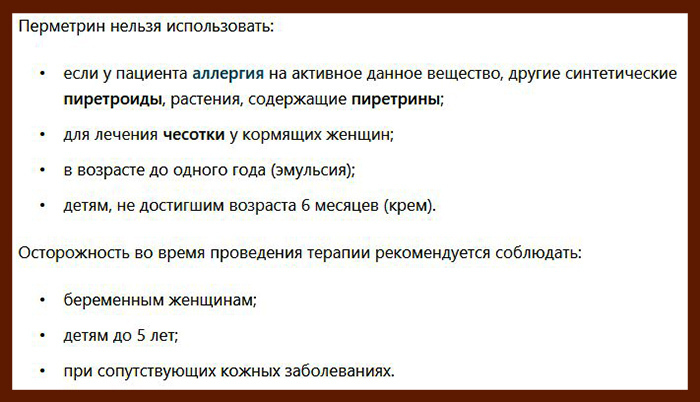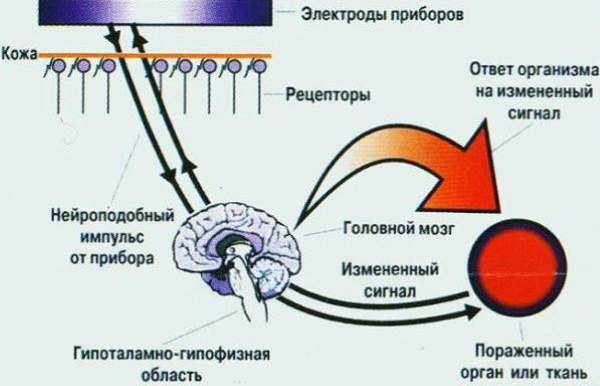Adrift disease can be acute or chronic form, followed by joint deformation or ankilozirovaniya (immobility due seam joint surfaces). Ankylosis in most cases occurs in rheumatoid arthritis. It is deforming sacroiliitis characterized by the formation of bone nodules (osteophytes) at the edges of the joint.

What it is?
Sacroiliitis - inflammation of the sacroiliac joint. It emerges as an independent disease or manifestation of an infectious or autoimmune disease. More often one-sided. double-sided characteristic of ankylosing spondylitis and brucellosisRarely seen in tuberculosis. Among the reasons: injuries lasting joint overload, congenital abnormalities of the joints, infectious or systemic diseases, tumors.
Causes of
Medics decided to allocate two large groups of causes that provoke inflammation.
The first form autoimmune diseases, which are characterized by asymmetric inflammation. This group causes isolated separately, as in these joints can not be detected additional symptoms. By inflammation can be diagnosed just the beginning of a system process.
The second group consists of the causes of the disease, which leads to the appearance of a conventional arthritis, as well as other pathological processes. If the patient is right-handed, it is generally sacroiliitis found on the right side. Accordingly, the left-handed left-handed people identify sacroiliitis.
In this group, it decided to allocate the following reasons:
- Incorrect joint biomechanics;
- State of pregnancy;
- Disease of an infectious nature;
- Osteoporosis is diagnosed in women in the postmenopausal stage;
- Malformations due to complications during childbirth;
- Neoplastic condition that develops in the pelvis, retroperitoneal and pelvic cavity;
- Features of work associated with length of stay in a sitting position, causing a weakening of the pelvic ring.
Classification
On the mechanism of the disease distinguish these types of sacroiliitis:
- Primary sacroiliac disease - a disease which has arisen within the sacroiliac joint and its ligaments and restrict its structures. Primary sacroiliitis may be precipitated as the case of traumatic injury (resulting infection), and in tumor lesions of bone (e.g., when a tumor directly to the spine).
- Secondary sacroiliitis - has a more complicated genesis as sacroiliitis is only one indication of the underlying disease. In large part, here plays the role of an allergic or immune component, where the disease occurs as the body's response to certain changes. Not the least role in the occurrence of secondary sacroiliitis play rheumatologic diseases, provoking problems in the functioning of the immune system, causing the body starts reacting against its own fibers of the connective tissue of the axial skeleton.
Despite the fact that in the pathogenesis of the disease have been significant advances and scientists were able to classify sacroiliitis in two broad categories - primary and secondary - still in clinical practice are not moved from the usual separation disease depending on the reasons for which it is directly called.

Common symptoms associated with all types of illnesses
The most important symptom characteristic of all kinds of sacroiliitis, is a pain. It occurs in the lower spine in the sacrum or lumbar region. Usually radiates to other parts of the body: the Achilles tendon, thigh, buttock. It is characterized by amplification at the time of pressing and after a long stay in the same position.
Other symptoms of sacroiliitis are possible:
- irritability;
- increase in body temperature to 37.5;
- pain in other joints;
- prostration;
- visual disorder (lacrimation, sensitivity to bright light, and others);
- there may be disturbances of heart rhythm and breathing.
Other symptoms can vary depending on factors that resulted in the development of the disease. So, the clinic each of the following forms of the disease:
- Infectious sacroiliitis. In addition to pain, there are symptoms such as fever, abscesses develop in the gluteal muscle area. Also, there are infectious - toxic symptoms which are caused by the release into the bloodstream from micro-organisms.
- Rheumatic sacroiliitis. In this case, there is pain in the lower back, which is stronger in the morning and after a rest. If a person is "at odds", the pain subsides. Other symptoms characteristic of sacroiliitis are identical manifestations of the underlying disease: malaise, increased temperature, osteoporosis, loss of other joints, tendons, such as Achilles and hip.
- Traumatic sacroiliitis. In addition to pain, there is swelling at the site of injury, skin redness, bruising, hematoma. In some cases, particularly when large intensity factor traumatic impact may occur in violation of the open wound of skin integrity. Thus there is bleeding, which creates perfect conditions for entering the body through the bloodstream pathogens.
- Tuberculosis and Brucellosis sacroiliitis characterized by subacute with symptoms such as fever, pain that occurs periodically and amplifies only under certain circumstances. But it so happens that the tuberculosis or brucellosis sacroiliitis occurs more pronounced: there is a general malaise, headaches, aching joints, increased sweating, chills, and other signs intoxication.
It is worth noting that during the early and late stages of sacroiliitis symptoms will vary, at least in its intensity. So, in the early stages it can be non-specific symptoms, and for this reason, many patients do not attach any special significance. Approximately 2 stage of disease joins febrile syndrome, fever, body weight decline. In the morning and at night appears moderate pain in the lumbar section.
extent of disease
Distinguish such degree of development of the disease:
- The first degree is rarely characterized bright features. Sometimes the patient may disturb pains in the back, which irradiates in the Achilles tendon;
- The second degree of disease characterized by pain in the area of the buttocks and thighs. The patient feels cutting pain in the lower back, which reduces the mobility of the vertebrae in the area. Already at this stage the disease can lead to deformations of the spine;
- The third stage of the disease is characterized by the features as ankylosis sacrum or iliac bones. See these signs of the disease is possible by means of X-ray studies. This stage is characterized by the occurrence of sciatica, cramps in the muscles, as well as changes in blood pressure.
Diagnostics
In order for the doctor to refer the patient to be examined, in addition to the above symptoms, should be confirmed by inflammation by routine laboratory tests.
For example, it can be identified:
- Positive data for specific immunodiagnosis microorganism (in the case of a specific pathogen);
- leukocytosis in peripheral blood;
- leukocyte shift to the left, to the young or even myelocytes;
- increased erythrocyte sedimentation rate;
- expressed the general reaction of the organism: fever, intoxication, soft tissue edema, generalized inflammation talking about - cellulitis in intermuscular spaces of the pelvis;
- remote defeat of the joints, the presence of skin rashes, dactylitis, defeat nail plates (this occurs in psoriatic arthritis).
The fastest and most informative method of diagnosis, as already mentioned, is the X-ray of the pelvis with the sighting, big shot sacro - iliac joints in direct projection with the mandatory seizure of two joint gaps on all their throughout.

complications
Serious complication of purulent sacroiliitis is the formation of burrowing pus with a break in the gluteal region, and especially in the pelvic cavity. In the presence of streaks and the palpation revealed painful fluctuating elastic formation with rectal examination. Penetration holes pus in the sacral and vertebral canal accompanied by lesion of the spinal cord and its membranes.
Treatment of different types of sacroiliitis
sacroiliitis Treatment is mainly conservative. The general scheme of complex drug therapy consists of:
- nonsteroidal anti-inflammatory agents (nimesulide, diclofenac);
- tumor necrosis factor antagonists (infliximab);
- hormones (dexamethasone, methylprednisolone);
- antibiotics (streptomycin, clarithromycin, ceftriaxone).
When expressed pain syndrome makes blockade of the introduction joint trigger points in muscle (portions hypersensitivity) or spinal canal lidocaine, Kenalog, diprospana.
The main tools in the elimination of the causes of specific inflammatory agents act, detrimental effect on certain pathogen, e.g., anti-inflammatory drugs (thioacetazone, isoniazid) in tuberculous sacroiliitis.

Physiotherapy with sacroiliitis
To date, there are many studies that confirm the effectiveness and benefits of physiotherapy with sacroiliitis. This is especially important when rheumatic nature of the disease.
- Infrared radiation affected area. Infrared radiation has a warming and locally stimulating effect. As a result of accelerated healing processes, immunity is stimulated, the resorption occurs infiltrates and other signs of chronic inflammation.
- Laser radiation on the spine and on the area of the sacroiliac joint. Under the action of the laser radiation activated special sensitive molecules in tissues and organs that interacting with the surrounding cells alter the activity of metabolic reactions and increase consumption oxygen. As a result, cell division is stimulated, activated glucose production and lipolysis. All this increases the ability of tissue regeneration (recovery).
- Phonophoresis anti-inflammatory drugs and local anesthetics. Under the action of ultrasonic vibrations is enhanced absorption of drugs increases the area of their distribution, their enhanced therapeutic effect.
- High-intensity pulsed magnetic therapy. Under the influence of the magnetic field change metabolic processes between cells, enhanced metabolism, accelerating the removal of decomposition products, which helps reduce the inflammatory response.
In addition to these methods of influence by physical factors important is to carry out the correct exercises that can effectively deal with morning stiffness of the joints, as well as allows you to keep an adequate operational capacity and joint limbs.
Forecast
As a rule, infectious causes and timely treatment of sacroiliitis, against immunity Outlook remains favorable. In case of violation of the joint biomechanics and muscle fatigue, treatment longer with the development of aseptic process includes massage, and physical therapy, and physiotherapy.
Finally, the "rheumatic" sacroiliac disease - symptoms, treatment, prognosis of which points to the connective tissue damage - can occur for many years. All will depend on the activity of the autoimmune process.
prevention
Sacroiliitis does not belong to the category of rare events. First of all, it is connected with a lot of professions that a sitting position. So do not neglect preventive measures, allowing to avoid health problems.
To not develop sacroiliitis, should promptly treat infectious diseases, strengthen the immune system, to play sports. A sitting position on the possible need to diversify and walking workout. When the patient's joint presence of the load on it should be minimized.
Doing these simple recommendations to avoid unpleasant and even severe consequences sacroiliitis such as limiting the mobility of the spine to the lumbosacral region up to a total loss of opportunity movement.



